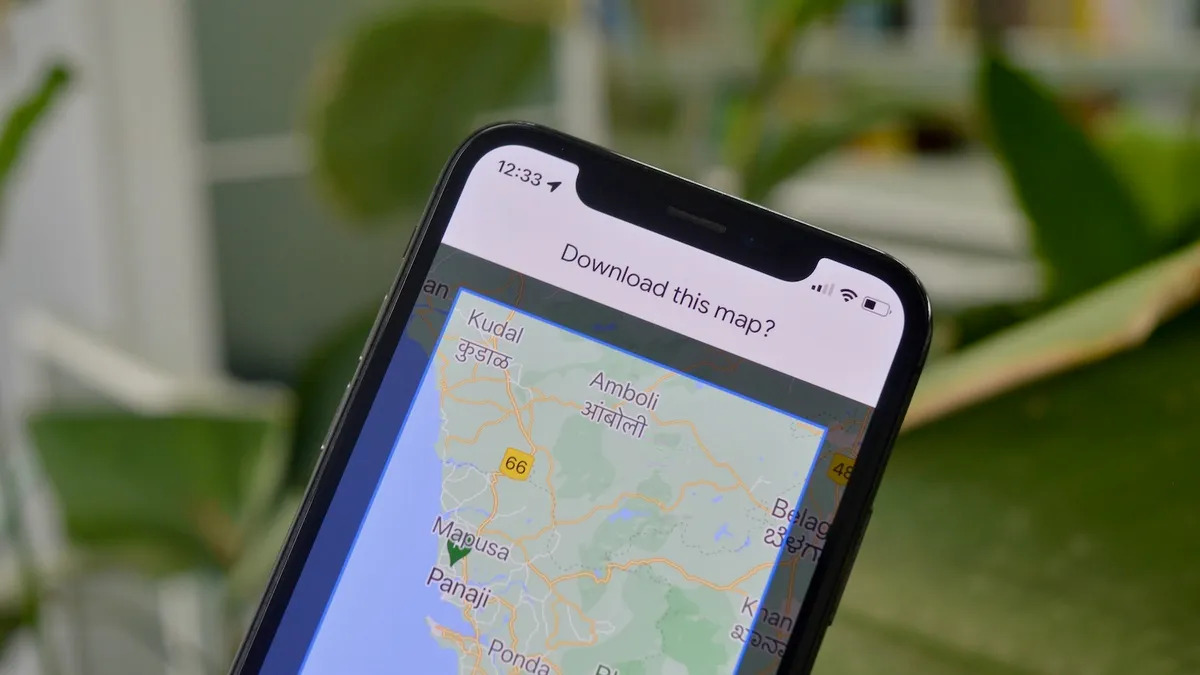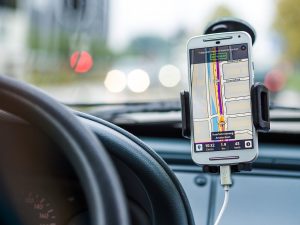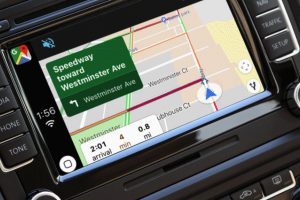Introduction
Google Maps is a widely-used navigation tool that helps you find your way around, discover new places, and plan your journeys. While it is convenient to use Google Maps online, there are instances when you may not have access to the internet, such as when you’re in a remote area or traveling internationally. In such situations, downloading routes from Google Maps can be incredibly useful.
Downloading routes allows you to access maps and directions offline, ensuring you never get lost even without an internet connection. Whether you’re going on a road trip, hiking in a remote location, or simply preparing for an upcoming journey, having offline access to your routes can provide peace of mind and convenience.
In this guide, we will walk you through the step-by-step process of downloading routes from Google Maps. With just a few simple steps, you can have your desired driving, walking, or public transit route readily available on your device, even when you’re offline.
So, whether you’re an avid traveler, an adventurer, or simply someone who wants to be prepared for any situation, let’s dive in and learn how to download routes from Google Maps.
Step 1: Go to Google Maps
The first step in downloading routes from Google Maps is to access the Google Maps website or open the Google Maps app on your device. You can do this by typing “Google Maps” into your preferred search engine or by locating the app on your smartphone or tablet.
Google Maps provides a user-friendly interface that makes it easy to search for locations, get directions, and explore different areas. Once you have opened Google Maps, you can proceed to the next step to begin the process of downloading your desired route.
It’s important to note that while accessing Google Maps is free, downloading routes for offline use may require a stable internet connection. Therefore, it’s recommended to connect to a reliable Wi-Fi network before proceeding with the download process.
Once you have accessed Google Maps, you are ready to move on to the next step, which involves entering your starting point and destination.
Step 2: Enter your starting point and destination
After opening Google Maps, the next step is to enter your starting point and destination. This will allow Google Maps to generate the most accurate route for you to download.
On the Google Maps website, you’ll find a search bar at the top left corner of the screen. Click on the search bar and enter your starting point in the form of an address, landmark, or the name of a city. As you type, Google Maps will provide suggestions to choose from, ensuring you select the correct location.
If you are using the Google Maps app, you’ll find a similar search bar at the top of the screen. Tap on the search bar and enter your starting point in the same manner.
Once you have entered your starting point, repeat the same process to enter your destination. Google Maps will use this information to calculate the distance, duration, and optimal route for you.
It’s worth noting that you can enter multiple destinations if you have several stops along your route. This feature is particularly useful for planning road trips or visiting multiple places in one journey.
Once you have entered your starting point and destination, Google Maps will provide you with a suggested route. You can view this route on the map and customize it further if needed. Once you are satisfied with the proposed route, you can proceed to the next step to download it for offline use.
Step 3: Choose the route you want
After entering your starting point and destination in Google Maps, you may have multiple routes to choose from, especially if there are several possible ways to reach your destination. In this step, you’ll need to select the specific route that you want to download for offline use.
Google Maps will present several route options, each with its own estimated travel time, distance, and any potential traffic congestion. You can view these routes either as a list or on the map itself.
To view the routes as a list, click on the “Directions” button on the left side of the Google Maps website, or the “Directions” icon at the bottom of the app. You’ll see a breakdown of the different routes, including turn-by-turn directions for each option.
If you prefer visualizing the routes on the map, ensure that the map view is active and not the satellite or terrain view. The map will display colored lines representing the different route options. Each line will have information about the estimated time and distance.
Take your time to evaluate each route and consider factors such as distance, expected traffic conditions, and any specific preferences or requirements you may have.
For example, you might prefer a scenic route that takes you through picturesque landscapes, or you might want the fastest route to save time. You may also want to avoid toll roads or prioritize routes with public transportation options.
Once you have chosen the route that aligns with your preferences and requirements, you can proceed to the next step to prepare for downloading the offline map.
Step 4: Click on the three-dot menu
After selecting the route you want to download from Google Maps, it’s time to access the necessary options to initiate the download. In this step, you will click on the three-dot menu, which contains various settings and functionalities.
On the Google Maps website, the three-dot menu is located in the top left corner of the screen, near the search bar. Simply click on the three dots to open a drop-down menu.
If you are using the Google Maps app, the three-dot menu can be found in the top right corner of the screen. Tap on the three dots to access the menu.
Clicking or tapping on the three-dot menu will open a list of additional options that you can explore. These options may include settings related to your map view, location sharing, and more. For our purpose of downloading the route, you need to locate the option that allows you to download the offline map.
In some versions of Google Maps, the option to download offline maps may be labeled differently, such as “Offline maps” or “Download offline area.” Look for a similar option within the three-dot menu.
Once you have located the relevant option, proceed to the next step to select and prepare the desired area for download.
Step 5: Select “Download offline map”
After accessing the three-dot menu in Google Maps, the next step is to select the option that allows you to download the offline map. This feature enables you to save the selected route and surrounding area to your device for later use, even without an internet connection.
Look for the specific option labeled “Download offline map” within the three-dot menu. The wording may vary slightly depending on the version of Google Maps you are using.
By selecting “Download offline map,” you will trigger a prompt or a new screen where you can customize and finalize the details of your offline map download.
At this point, you may need to confirm the specific route you want to download, as well as choose the extent of the map area you wish to save. The map area typically includes the selected route and a buffer zone around it, ensuring that you have ample coverage even if you deviate slightly from the planned path.
On the Google Maps website, you may need to click or tap on the route or a specific section of the map to initiate the offline map download process.
Once you have confirmed the route and adjusted the map area, proceed to the next step to begin the download process. Ensure that your device is connected to a stable and reliable internet connection, as downloading the map may require a significant amount of data.
With the offline map download initiated, you’re one step closer to having your desired route readily available for offline use.
Step 6: Choose the desired area
After selecting “Download offline map” in Google Maps, you will be prompted to choose the specific area that you want to save for offline use. This allows you to have access to the map even when you don’t have an internet connection.
Depending on the version of Google Maps you are using, you will either be presented with a visual interface where you can manipulate a map box to select the desired area, or you may have to input specific parameters, such as the amount of storage space you want to allocate for the offline map.
If you are using the visual interface, you can adjust the map box by dragging the corners to encompass the desired area. The shaded region within the box represents the map area that will be saved. You can zoom in or out of the map and reposition the box as needed to include the necessary coverage.
Some versions of Google Maps may also provide options to choose additional map features, such as terrain details or satellite imagery, to enhance the offline map experience. Take a moment to explore these options and select any additional features that you find useful.
Once you have finalized the area and any additional settings, proceed to the next step to initiate the download of the route map.
It’s important to note that the size of the selected area will determine the amount of storage space required on your device. Larger areas with more detailed mapping information will occupy more storage space. Ensure that you have enough available storage before downloading the offline map.
With the desired area chosen, you are now ready to download the route map and have it accessible offline on your device.
Step 7: Download the route map
After selecting the desired area for your offline map in Google Maps, it’s time to download the route map and save it to your device for offline access. This final step ensures that you have the necessary navigation information even when you don’t have an internet connection.
Click or tap on the “Download” or “Save” button to initiate the download process. Google Maps will start downloading the map data for the selected route and surrounding area. The download time may vary depending on the size of the map and the speed of your internet connection.
While downloading the route map, it’s important to keep your device connected to the internet and ensure that it has enough battery power to complete the process. Interrupting the download or running out of battery during the download may result in an incomplete offline map.
Once the download is complete, the route map is now stored on your device and accessible offline. You can access the downloaded map by opening Google Maps and navigating to the “Offline maps” or a similar section in the app or website.
In the offline maps section, you will find a list of the maps you have downloaded, including the route map and any other maps you have saved for offline use. Simply select the desired map to view the route, directions, and other navigational information without an internet connection.
Keep in mind that the downloaded map is only available offline for a limited period of time, typically around 30 days. After this period, Google Maps will automatically update the map to ensure accuracy and provide the latest information. If you want to continue using the offline map beyond this period, be sure to update it before the expiration date.
With the route map successfully downloaded, you are now equipped with an offline navigation tool that can guide you on your journey, even when you’re offline or in areas with no internet signal.
Conclusion
Downloading routes from Google Maps is a valuable tool for ensuring you have access to navigation information even when you don’t have an internet connection. By following the step-by-step process outlined in this guide, you can easily download your desired route and surrounding map area, allowing you to navigate offline with confidence.
Whether you’re embarking on a road trip, exploring a remote area, or simply planning ahead, having offline access to your route can provide convenience, peace of mind, and enable you to make the most of your journey.
Remember to connect to a reliable Wi-Fi network before downloading the route map to avoid using excessive data and ensure a smooth download process. Additionally, keep in mind that the downloaded maps are available offline for a limited time, so it’s important to update them regularly to have the most up-to-date information.
With Google Maps’ user-friendly interface and versatile features, you can easily customize your routes, choose between various options, and save the maps for offline use. This flexibility makes Google Maps not only a powerful online navigation tool but also a reliable companion for your travels, even when venturing off the beaten path.
Now that you know how to download routes from Google Maps, you’re ready to explore new destinations, navigate unfamiliar territory, and embark on unforgettable adventures, all with the confidence of having your route readily available, even when you’re offline.

























